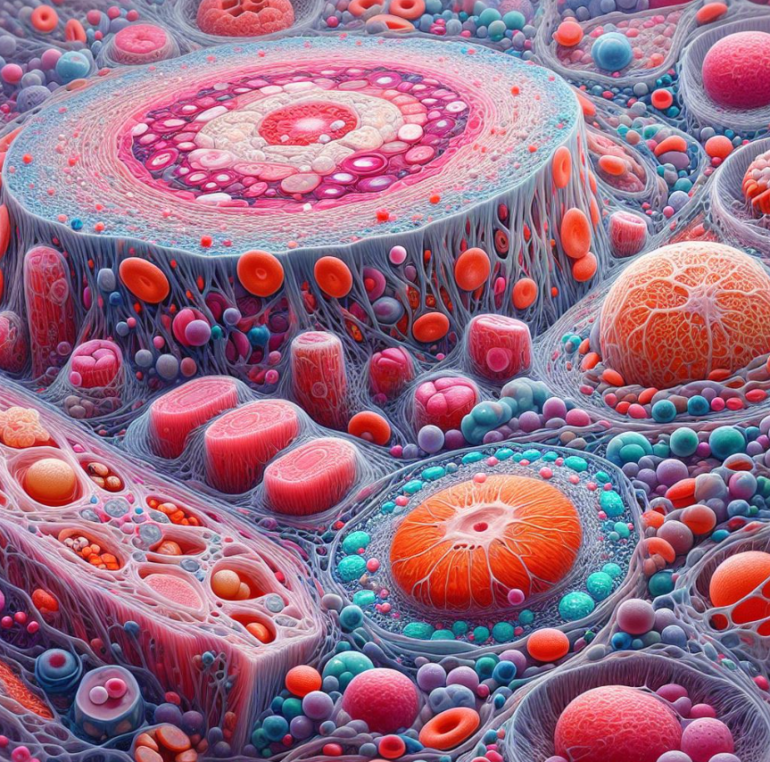TL;DR:
- South Korean scientists, led by Professor KIM Jae Kyoung, reveal insights into cellular variability within the human body.
- Discovery holds the potential for improving chemotherapy efficacy and addressing antibiotic-resistant bacteria.
- Cells possess a signaling system responding to external stimuli, playing a crucial role in survival.
- Cellular heterogeneity, where genetically identical cells react differently, impedes cancer treatment.
- Current technology limits the study of signaling system processes.
- Density Physics-informed neural networks (Density-PINNs) enable inverse estimation of signaling system details.
- Application of Density-PINNs to antibiotic response data unveils a parallel signaling system structure.
- Mathematical modeling and machine learning enhance understanding of cellular heterogeneity, benefiting cancer treatment.
- Professor Kim anticipates improved cancer treatment strategies stemming from this research.
Main AI News:
In a groundbreaking study led by Professor KIM Jae Kyoung, a team of South Korean scientists from the Biomedical Mathematics Group within the Institute for Basic Science (IBS-BIMAG) has delved into the intricate world of cell variability within our bodies. Their findings promise to usher in a new era in the realm of medical science, potentially revolutionizing chemotherapy treatments and shedding light on the enigma of antibiotic-resistant bacteria.
The cells dwelling within our bodies possess a sophisticated signaling system, finely tuned to respond to a multitude of external stimuli, ranging from antibiotics to fluctuations in osmotic pressure. This signaling system serves as a linchpin for the survival of these cells, enabling them to adapt and interact effectively with their ever-changing environment.
Surprisingly, even cells sharing identical genetic blueprints can exhibit divergent responses to the same external triggers, a phenomenon known as cellular heterogeneity. This quirk of nature has long stymied medical researchers, particularly in their quest to completely eradicate cancer cells through chemotherapeutic interventions.
Unraveling the origins of this heterogeneity, and deciphering its intricate connection with the signaling system, has remained an elusive challenge, primarily due to the limitations of current experimental technology in capturing intermediate processes.
Enter Professor Kim’s pioneering research team, armed with a cutting-edge machine learning methodology known as Density Physics-informed neural networks, or Density-PINNs for short. Density-PINNs harness the power of time-series data from cellular responses to external stimuli, enabling them to reverse-engineer crucial information about the signaling system.
In a remarkable application of Density-PINNs to real-world experimental data involving antibiotic responses in bacterial cells (specifically, Escherichia coli), Professor Kim’s team unearthed a profound insight: a parallel architecture within the signaling system can mitigate the levels of heterogeneity among cells.
This mathematical modeling and machine learning breakthrough, as envisioned by Professor Kim, holds the promise of significantly advancing our comprehension of cellular heterogeneity—a pivotal factor in the field of cancer treatment. With optimism in his voice, he expresses the hope that this achievement will pave the way for the development of more effective cancer treatment strategies, offering newfound hope to patients and medical practitioners alike.
Conclusion:
The breakthrough in understanding cellular heterogeneity through machine learning and mathematical modeling represents a game-changer in the medical field. This revelation will likely drive innovation in cancer treatment and reshape the landscape of healthcare solutions, offering new hope to patients and creating opportunities for advancements in pharmaceuticals and medical technology.

